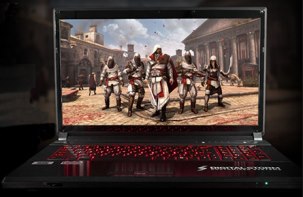It seems that every time you hear the word “sequel”, you think of “more”; more action, more stories, and more of whatever made the original title stand out from the rest. Nowadays, most game publishers seem to be churning out sequels to capitalize on the success of existing titles. Often, that’s a good thing, but in some cases, not so much.
Undeniably, most games available today are, in fact, sequels produced by publishers and developers alike. Adding sequels to a title takes it from being a memorable one-time experience to a powerhouse franchise. Games like Mass Effect, Call of Duty, BioShock and Uncharted have all transformed into lucrative commodities that generate immense revenue and offer more to gamers. The production of a sequel, however, is more difficult than creating new intellectual property (IP). Most developers believe that, in order to create a new iteration of a solid first title, careful scrutiny and creativity are imperative.
These days, designers endeavor to create titles that are in line with fans’ demands and tailored to their needs. Notable titles of this kind are Super Street Fighter 2 Turbo HD Remix, which incorporated fan feedback to the “un-remixed” version, and the Street Fighter 3: 3rd Strike Online Edition, which promises to take fan suggestions into consideration during development. The problem, however, lies in the amount of content available for designers to work with and the overall practicality of the design. Most developers believe in working on ideas that weren’t or couldn’t be implemented the first time around. Then, there is the dilemma of incorporating new mechanics – to keep things fresh – without clashing with the essence of the original title, all in the effort to strike the perfect balance that attracts new players and keeps veterans entertained. As they commonly say, if it isn’t broke, don’t fix it. Since sequels garner more attention, players new to the franchise need to know the workings of the game; hence, tutorials are the best way to acclimatize them to the game and are considered an integral part of any new game’s design. While experienced players seldom feel the need to re-educate themselves with the game’s mechanics, certain tweaks and improvements in the sequels, make a quick run-through of the guide seem like a good idea.
Maintaining balance is crucial and a lot of developers know better than to depend on just one aspect of the game for its success. No matter how much effort is put into a sequel, there’s always the danger of the franchise becoming stale at some point. Most titles aggressively try to bring something new to the table, since a lot of mechanics have become formulaic to the point of being mundane. Gears of War demonstrated a great game design; it was one of the first games to assign a special button for going undercover and it also introduced the gaming world to the concept of blindfiring. Going back to the basics and reimplementing what worked in the days of yore (as seen in Mega Man 9 and the Sonic the Hedging 4).
Incorporating what works every time is not necessarily a bad thing. Mirrored control schemes are a source of comfort to players, and evident from titles like Mass Effect 2 and Bayonetta, which are heavily influenced by predecessors and others in the genre. Asmussen believes that when a development team burns itself out on a particular project, the best thing to do is to either hand it over to a new team (as with Metroid: Other M) or shelve it until the original team is ready to get back into action (Twisted Metal). This not only brings a new, creative spin to the property, but also manages to generate interest among fans who love to see something different. Even titles like the infamous Duke Nukem Forever, which has been stuck in development hell for a good 13 years, create a lot of buzz in the industry; fans of the ever-elusive title continue to grow to this day.
However, not all sequels manage to live up to the hype that the original titles managed to create, in spite of offering significant advances over their predecessors. Despite having new features (Resident Evil 5’s co-op), new developers (BioShock 2), or new mechanics (Final Fantasy 8), some sequels just don’t offer what their predecessors so splendidly excelled at providing to their fans, which results in low scores and lower sales. As intense as they may be, often, sequels are ultimately guilty of either being too complicated or inconsistent, or fall into an abyss of the ‘been-there-done-that-with-something-better’ games.
What drives the industry these days, is the ability of franchises to produce stellar sequels for fans to enjoy. As much as the designers have to do with the entire creative process, die-hard fans should also be appreciated for voicing their opinions on future installments of their favorite titles. Sequels will continue to come out; we can only hope that the thought of “more” that they conjure, turns out to be more of something good.


